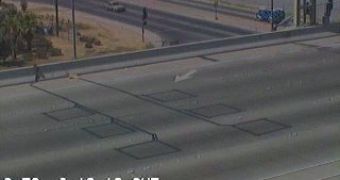Traffic boxes located beside major freeways are already monitoring traffic at the busiest intersections on the road network, but could become even smarter, able to locate road incidents and traffic back-ups, thus saving transportation authorities millions of dollars each year.
A new project developed by engineers at the Ohio State University is aiming to make these spies of the streets smarter, so that they will be able to notify authorities when something happens using only a fraction of the bandwidth that was previously required.
Benjamin Coifman, associate professor of civil and environmental engineering and geodetic science at Ohio State, is leading the project and say these controller boxes could soon be doing much more than just watching cars.
"The basic technology of these devices is very reliable, and such detectors are becoming more widespread as congestion increases," said Coifman. "But little attention has been paid to how they are used.
"It's as if you handed a teenager a cell phone and said, 'make all the calls you like.' A lot of information gets transmitted, you might only be interested in a small amount of it, and you get a large phone bill at the end of the month."
The main problem with these controllers is that they send too much random data to the transportation center that is doing the monitoring, even as often as once every twenty seconds, which requires a lot of bandwidth, which in turn greatly increases the costs.
"When the number of controller boxes in use around the country was small, the communication costs were small, but now that the numbers are increasing, so are the bills," Coifman said.
He's proposing a new software that would help the controllers detect traffic incidents and get important messages back to the traffic control based on traffic patterns while making their own decisions about the importance of the incident and whether it should be reported on the spot or just recorded and stored for later retrieval.
This new method would make these surveillance applications not only more efficient, but also more cost-effective, allowing a large city like Columbus, Ohio, to save tens of thousands, while a state like California could save over a million dollars a year.

 14 DAY TRIAL //
14 DAY TRIAL //